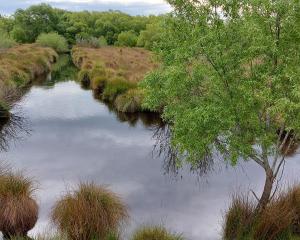After visiting Tropical North Queensland, Elisabeth Easther and her son give Fitzroy Island four thumbs up.
Fitzroy Island is a cliche of a tropical paradise - pretty as a postcard. First impressions are of lofty palm trees, golden-tan sand and a blue, blue sea.
The 339ha national park is just 45 minutes by fast cat from Cairns and it's the sort of place that, as soon as you arrive, you're planning to return.
This tropical treasure was once attached to the mainland. It was cut adrift at the end of the last Ice Age when waters rose with the thaw.
Beneath that rising tide, astonishing coral reefs formed on the virgin seabed while the land sprouted rainforest.
The island - originally called Koba - has been an important hunting ground for the Aboriginal people. Later, in the 1770s, Captain Cook sailed past and took the liberty of changing the island's name to Fitzroy.
Since then it has been a pearling station, an Aboriginal mission and, during World War 2, it served as a gun emplacement.
Today, it's home to a turtle sanctuary, a lighthouse, a handful of walking tracks and a very agreeable resort.
My son and I pressed fast-forward as soon as we were deposited on the wharf.
We charged up to reception and checked in as swiftly as good manners allowed - we couldn't wait to plunge into the ocean and get stuck into the snorkelling.
Dumping our bags - with barely a backwards glance at our glamorous third-floor, sea-view, jungly apartment, complete with full kitchen - we zipped to the dive shop for masks, snorkels, flippers and, that unbeatable fashion statement, the stinger suit.
These shiny one-piece Lycra numbers (with hood, mittens and stirrup-leg pants) are recommended for ocean activities from October to May to protect wearers from harmful jellyfish (not that we encountered any).
This uncompromising costume is much like being naked and painted blue - we did briefly wonder if it was a prank the locals like to play, but still, better safe than sorry.
Whisked away by glass-bottomed boat to a precious little cove called Hidden Bay, we splonked into the sparkling sea to find ourselves confronted with a plethora of piscatorial delights.
Like underwater spokes-models, we pointed out each new wonder with flourishes of our blue hands, goggling our eyes in extravagant mimes of astonishment.
After a good hour of snorkelling, the underwater appreciation society called their meeting to a close and returned to land to refuel at Fitzy's Bar and Grill, a breezy beachside eatery where patrons are expected to have sandy feet.
Suitably sated, we tore off for a tour of the island's turtle sanctuary, where ill and injured animals are nursed back to good health.
Largely staffed by volunteers, the turtle hospital is home to creatures that have been hit by boats.
Trapped in ghost nets, they have ingested plastic and can no longer dive for food - a sickness known as ‘‘floaters syndrome''.
Some of the patients have been at the sanctuary for years but, luckily for them, they can easily transition back to the wild. Turtles have remarkably strong instincts.
They emerge from their eggs completely self-sufficient so, no matter how long they spend in rehab, their survival skills kick in when they're returned to the sea.
Be sure, too, to keep your fingers out of the tanks. Those beaks mean business.
The jungle was a riot of butterflies, sulphur-crested cockatoos, skinks and lizards, but the 3.30pm fish-feeding waits for no-one, so we had to press on.
The greedy fish couldn't get enough and later, snorkelling around the wharf was like swimming in an aquarium chocker with trevally, butterfly fish, blue drummers and sergeant fish.
Squeezing in a quick kayak search for turtles - no joy - we made it to the pool, delaying dinner to chug a few mocktails at the swim-up bar.
Our favourite poolside regulation requested that punters resist the urge to sunbath in the nude.
Sleep came abruptly and we were rendered narcoleptic thanks to the jam-packed day combined with the three-hour time difference. Next morning, up with the cockatoos, there was time for just two of the island's five walks.
Tackling the shorter tracks we whipped up to the Secret Garden, a cool and shady retreat from ocean life, before zipping to pristine Nudey Beach, which staff took great pains to ensure we understood was NOT a clothing optional bay, Instead, it was named for a Captain Nudey.
Evidently, Fitzroy Island is not the place to go for an all-over tan, but in every other respect it is perfect.
● Elisabeth Easther is an Auckland actress, playwright and freelance journalist.
Need to know
Fitzroy Island is deliciously unspoiled.
With two dive outfits, a general store, a pair of fine restaurants, an elegant resort and a camping ground, visitors can snorkel, kayak, stand-up paddle-board, dive, hike, jump on the sea trampoline or simply hang out on the beach.
fitzroyisland.com.au












